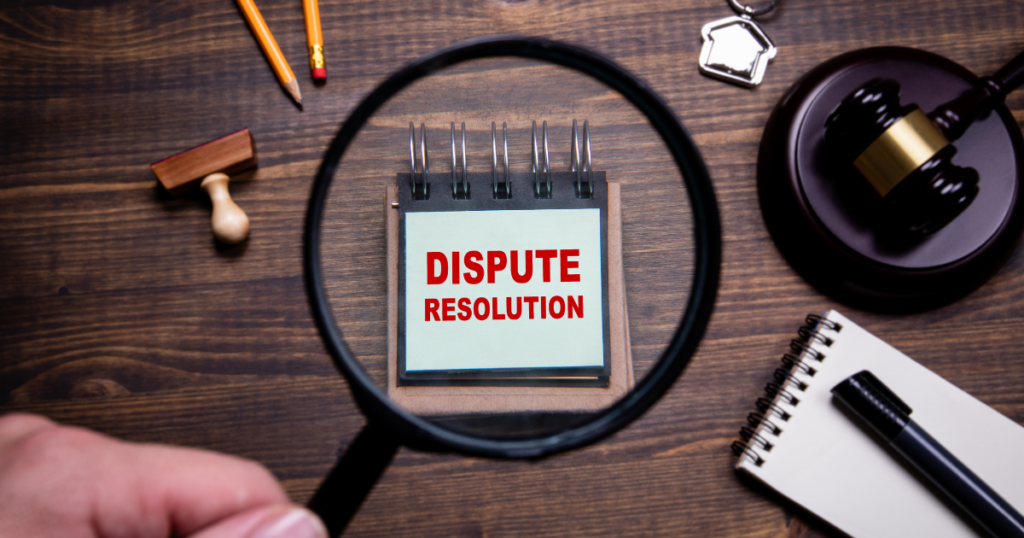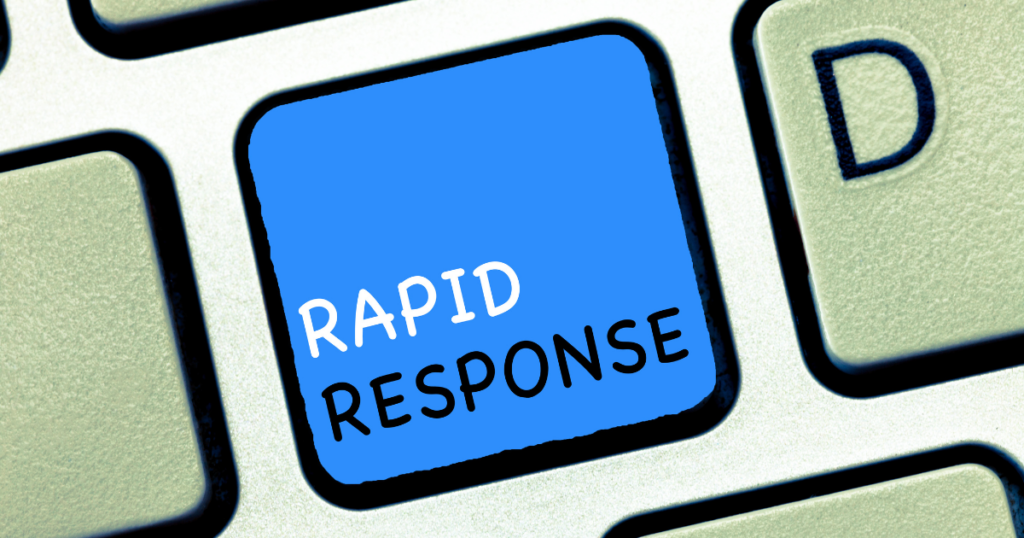Welcome back to our series on the role of trust in auto dealership success. After laying the foundation for why trust matters in our opening article, we now look closer at how your customer service standards can build trust. Read on for guidance on how to set customer service guidelines that exceed customer expectations and help you build strong relationships.
7 Tips to Create Customer Service Standards
These tips show how trust can be woven into every interaction with customers and prospects. From empathy and transparency to response time, here’s how to set standards that differentiate your dealership in the marketplace.
1. Establish Communication Guidelines

Communication guidelines ensure that your staff knows how to engage with prospects and customers, from greeting to goodbye.
Your guidelines should include what communication channels you’ll use, for example, email, phone, website contact forms, social media, text messages, etc. You’ll also want to determine if employees will be using their personal phones for work. This is a big question many business owners wrestle with, so check out our recent article, where we wrote about the pros, cons, and an innovative solution.
You’ll also want to set guidelines defining the tone and manner of responses. Employees should know where to go to get answers to customer/prospect questions and the process for escalating issues if needed.
Clear communication guidelines will streamline interactions with customers and prospects. They also help build trust by showing people that your dealership values smooth, consistent interactions.
2. Standardize the Resolution Process

When issues and complaints come up, you’ll need a well-defined process to resolve them quickly. Research shows that 90% of customers worldwide consider issue resolution their most crucial customer service concern. That means this is an area where you can quickly gain or lose trust, depending on how you handle the situation.
Define and standardize the steps your team should follow when encountering a prospect or customer with a complaint or problem. The steps should include when they should escalate the issue (bring it to a manager) and when they can exercise their best judgment to resolve the issue on the spot.
No matter how much you prioritize customer satisfaction, every auto dealership is bound to encounter complaints from time to time. When you create and train employees on the resolution process, they’ll be empowered to act confidently, and customers will be reassured that they are in good hands.
3. Implement Response Time Standards

Prompt responses to customer and prospect inquiries show that you respect customers and are eager to assist them. Setting and stating estimated response times helps set expectations for employees and customers alike.
Customer expectations of response time vary based on communication channel. For example, Zendesk reports these response time expectations:
- Email: 12 hours or less
- Social Media: 5 hours or less
- Live Chat: 1 minute or less
In tip #1, we advised you to specify all your communication channels. Now, it’s time to look at each one and consider what a reasonable response time would be for your dealership for each channel. You can then communicate these expectations to customers. For example, after a person fills out a form on your website, you can leave a note that they can expect a response within 24 hours (or whatever your response time standard is). Once your response time standards are set for each channel, you must communicate these expectations to your team so you can stick to your promises.
4. Develop an Empathy Training Module

According to Google, trust is a “firm belief in the reliability, truth, ability, or strength of someone or something.” This includes feelings and opinions based on a person’s interaction with your auto dealership. To build and maintain trust, your staff must know how to relate to customers and prospects and, to some extent, detect what they are thinking and feeling so they can react appropriately.
That’s where empathy training comes in. Empathy training can help your staff become more aware of others so they can understand and relate to them. According to this article, empathy can be taught, and training empathy often involves teaching the “Elements of Empathy Wheel“:
- Use communication cues to become aware of the person’s emotional state
- Practice active listening to understand the situation
- Find ways to relate and identify with the person
- Connect with the person emotionally
- Respond appropriately and with compassion
Empathy training can include role-playing exercises, formal courses, or even showing your team examples of challenging situations handled well (for example, by using call recordings). By learning how to better relate to others, your team can build trust and make customers feel truly seen, heard, and valued.
5. Set Standards for Follow-Up Communication

Research on follow-up communication demonstrates that not following up can cost you. Making a sale often requires multiple touchpoints, and follow-up communication after the sale can be instrumental in developing customer loyalty.
If you don’t have customer service standards for follow-up communication, now is the time to develop them. Define specific time frames for your team to reach out to customers and prospects after a visit or digital inquiry. This could be a follow-up call within 24 hours to thank them, an email with answers to their inquiries, or personalized information based on their interaction with your dealership.
Setting follow-up standards – and adhering to them! – ensures that no customer feels neglected and each one receives the attention they deserve. On the business end, it also helps you guarantee that no lead slips through the cracks. Consistent and respectful follow-up builds trust, enhances the customer experience, and boosts sales too.
6. Prioritize Transparency

In our last article, we revealed results from the KPA 2024 Dealership Trust Survey:
- 76% of Americans don’t trust dealerships to be honest about pricing.
- 86% are wary of hidden fees.
- 84% feel there’s a lack of price transparency.
These statistics demonstrate that consumers lack trust in dealerships due to a lack of transparency. This means that the more transparency you can build into your customer service and interactions, the easier it will be to build trust.
You can start by internally developing a culture of openness with policies that promote and encourage transparency. You can then build transparency into all your interactions with customers and prospects—whether face-to-face or digitally. Make information about pricing, fees, and service details readily available and easy to understand. Publicize your commitment to transparency on your website and in-store materials and develop a sense of openness in your social media and email marketing.
Being upfront in your business dealings minimizes the chance of a misunderstanding and reinforces customer confidence in choosing your dealership.
7. Use Data
It’s one thing to set customer service standards, but how do you know you’re adhering to them if you don’t have data? Our final tip is a reminder that collecting, analyzing, and acting on data is vital to measuring your efforts.
First, you must think about ways to capture data related to the customer service standards you’ve set. For example, data may be collected by your existing technologies, such as your CRM or cloud phone system. You can also ensure data on every customer interaction is logged in your CRM, and you can gather data via customer feedback surveys.
Next, you’ll want to analyze the data. For example, let’s say you want to evaluate whether your customer service standards are met in phone communications. In that case, call analytics can provide data on things like missed calls, wait time, and unreturned voicemails, which can help you evaluate your response time and follow-up. Meanwhile, call recordings allow you to listen in on calls to see if employees are demonstrating empathy and following communication guidelines, and they also allow you to investigate if there is a customer complaint. Also, Clarity Voice’s innovative new feature, Full Story Ai, can give you a real-time view of the full history and interactions with a lead or customer in a single interface.
After learning from the data, the final step is to act upon it. For example, you may need to adjust policies to address gaps and inefficiencies or enhance your staff training programs to tackle specific issues. The ultimate goal of setting customer service standards and analyzing your progress is continuous improvement.
Building Trust Through Service Excellence
As we conclude this article, we want to remind you that every aspect of your customer service is an opportunity to build trust. The standards you set reflect your dealership’s commitment to customer relationships. If you’re going to set standards, also make sure you adhere to them!
We look forward to continuing this conversation in our next article. As our series continues, we look forward to exploring how customer education strategies can also build trust. See you next time!




